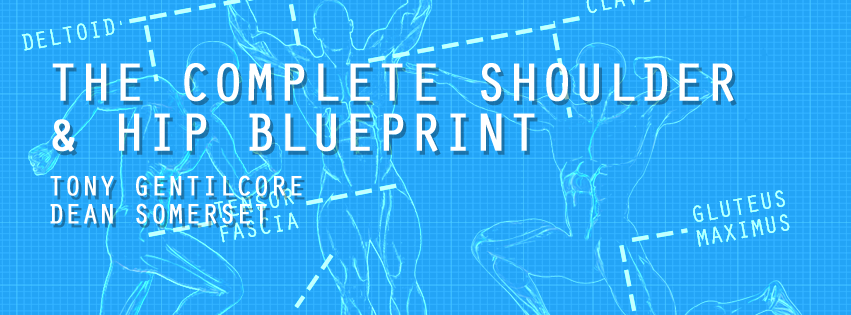Hierarchy of Fitness Industry Success
There’s a lack of resources out there informing new(ish) fitness pros what it takes to be successful in this industry. I thought I’d take some time to offer my two cents.
I’m not even going to swear, that’s how professional I want this post to be.

Copyright: yarruta / 123RF Stock Photo
I’d be remiss not to give credit to Alwyn Cosgrove who wrote one of the best fucking1 fat-loss articles I’ve ever read way back in 2007: The Hierarchy of Fat Loss. It’s an article I still refer to to this day and obviously served as inspiration for this one.
As with fat loss, when it comes to not sucking in this industry and being successful (whatever that may mean to you2), there’s a hierarchy of things that should be met and/or prioritized.
Just to be clear, having the cutest cat in existence isn’t one of them.
But it doesn’t hurt either.
Based on current trends you’d think all you need to become successful in the fitness industry is a YouTube channel, an endless collage of Yoga pants, or some kind of witty self-promotional title like, I don’t know, “Paleo Pirate” or “Han Swolo.”
[Not sure if those are already taken, but if not, you’re welcome]
I understand it’s popular and altogether easy to rag on “fitness celebrities.” I do it too and it’s often warranted. By the way, THIS article is one of the better ones in recent memory.
However:
- I don’t have a million followers. You don’t have a million followers. Let be real: We both want a million followers. They must be doing something right.
- Writing a snarky Facebook status or Tweet isn’t going to help anyone or solve the divide, so I decided to do something productive about it.
Hierarchy of Skillz
The roots of this post can go back several years, when we started our intern program at Cressey Sports Performance. Almost inevitably, when asked what they wanted us to cover, every new intern class wanted to go over more nuanced topics right away like assessment, PRI, or why my music playlist was way better than Eric’s
Yet, many couldn’t tell what muscles upwardly rotate the scapulae or coach a proper squat if their life depended on it. Or, on occasion, some weren’t socially comfortable enough to take the reigns on coaching someone in the first place: whether it was breaking down someone’s squat or demonstrating a proper deadbug.

It flies in the face of what many young coaches today are programmed to think, but, no, Instagramming your deadlift won’t get you into Men’s Health.
You’re going to have to build some career capital and experience the old fashioned way.
I’ll break down my hierarchy in more detail in a minute. Before that, however, I want to have a real, un-censored conversation. Here’s the umbrella theme I want you to consider the rest of the way:
I give you PJ Striet ladies and gentlemen:
“Work ethic. Cliched but true. Not many are willing to get out of bed at 4:30, get home at 8, and turn around and do it again and again, for YEARS. You work when other people don’t-early mornings, late nights, holidays.
And you have to combine that with the wherewithal to over deliver, all the time. I used to show interns a picture of a BMW or Mercedes and tell them “This is what your future clients could choose to spend their money on each month for what they will pay you. You better bring it, because this car is a helluva lot more attractive than doing lunges and rows.” This is where the people skills come in.
I’m not going to millennial bash, but most young trainers just ask me how to get in magazines, get book deals, etc. The thought of spending 17 years, much of which was spent doing one-on-one training over 14 hours a day, isn’t really appealing. God I sound like my late father.”
Copyright: kiwitaonga / 123RF Stock Photo
Man, that was good.
Okay, the Hierarchy…Finally
1. People Skills
I could just say wear deodorant and”don’t be weird,” but that wouldn’t be helpful.
It’s fashionable to think the way to go is online coaching nowadays. It’s easy and THAT’s where the money’s at, right?
Where are your clients coming from? Do you have all your systems in place to collect payment and stay on point with your book-keeping and scheduling? What about programming? What software are you using? Are you scheduling weekly or bi-weekly check-ins? How much access will your clients have to you? Are you prepared to introduce your face to your keyboard from all the emails you’re going to receive 24/7?
Sure you have the luxury of working from home or your local coffee shop, can travel when you want, and pants are always optional3, but online coaching can be more of a pain in the ass than people think.
There are plenty of people who do very well with it. I’d argue, though, that the ones who do really well are also the ones who spent years honing their craft coaching people in real-life.
A piece of advice I often give to new trainers who email me for career advice is this:
“In the beginning you should spend, minimum, two years working in a commercial gym.”
I did it for five. Eric Cressey did it for four. Mike Robertson did it for a while too. You’re not above it. You’re not that special, snowflake.
It’s the only way you can pretty much guarantee you’re going to gain access to as wide a variety of clientele as possible. Extroverts, introverts, Type A, Type B, athletes, non-athletes, injured, not injured, assholes, not assholes, so on and so forth.
Learning how to work with different people, from different backgrounds and experience levels is priceless experience. Experience that will make you a better coach in both real life and the virtual world.
2. Anatomy
You don’t need to be on par with Dean Somerset, Sue Falsone, or Dr. Frankenstein on the topic, but you should know your anatomy. It dumbfounds me how many fitness “professionals” can’t name all four rotator cuff muscles or explain the real function(s) of the rectus abdominus.
Likewise it’s not just knowing insertions, origins and regurgitating what your anatomy book tells you. Functional anatomy matters as well. Like, understanding that being stiff and “tight” isn’t always bad, or that if you spot a DB press like this (from the elbows) bad things will happen.

At the end of the day it’s going to be hard to break down movement and to explain things to your clients/athletes if you have no idea what certain exercises work or do.
3. Movement/Exercise Technique/Cueing
You’re not going to be able to write effective programming if you’re unable to break down exercise technique.
THIS post from Tony Bonvechio is an excellent example of how creating context and breaking down movement in ways your athletes/clients can relate to is a powerful skill to learn. Likewise, THIS post I wrote a few years ago explains the difference between External vs. Internal Cueing and how the former kicks the latter’s ass.
THIS one is more recent and also goes into external cueing.
Another skill that falls under this heading is the ability to regress/progress exercise on the fly. I’m not an infallible coach, I make mistakes. Sometimes I’m overzealous and include an exercise that’s too aggressive for someone. Other times, too easy. The last thing you want to be is unprepared. As a coach or trainer nothing reeks of ineptitude more than this.
In short, you should be able to break down basic human movements:
-
-
- Squat
- Hinge
- Push
- Pull
- Single Leg
- Carry
- Rotate
- Fist Pumps
-
As well as match all the above with the needs, goals, and ability level of each of your clients. Moreover, you should be able to do so simply. If you start explaining something to someone and they start looking at you as if you’re speaking Elvish you’re doing it wrong.
4. Nuts & Bolts
This gets right to the meat and potatoes of what many are often too quick to jump to: exercise selection, order, sets/reps, rest intervals, tempo, etc. Essentially, program design.
I love Mike Boyle’s analogy here.
When it comes to program design you have Chefs, Sous Chefs, and Cooks.
- Cooks – are those writing their first program or have very little experience writing programs. Most likely you’re better off following someone else’s lead.
- Sous Chef – these are your coaches who have 3-4 years experience.
- Chefs – 5 + years experience. These are your Mike Boyle’s, Dan John’s, Optimus Prime’s, etc.
Can you start to see why the previous categories help to pave the way for writing effective training programs?
5. Continuing Education
Some people get caught in the black hole of continuing education, interning, and certification grabbing. This isn’t necessarily a bad thing. Far be it from me to dis anyone who places a premium on educating themselves and trying to get better.4
Read. Go to seminars. Intern. Shadow. Observe. Watch.
Do what you gotta do.
At some point though, you need to get actual experience and start applying what you learn.
6. Sales/Building a Brand
If I had any talent with photo shop or making shapes on a computer this would be at the top of a pyramid, and the least important. Not to say it isn’t important. It’s just the least important.
Many people are quick to hop on the brand building wagon before there’s a brand to even build. To put things into context (and I am not implying this is way things should be done):
- I didn’t have my first logo and t-shirt made until this past year. Yet, there are some trainers who are writing ebooks two months into their “career,” and wondering why they’re unable to generate sales.
Ahem, glance at the hierarchy.
- In addition, I didn’t release my first product – Complete Shoulder & Hip Blueprint – until this past year as well (15 years in).
I know someone may chime in with, “well, I work in a commercial gym and I’m supposed to hit sales quotas each month! Shouldn’t I focus on sales?”
I get it. It sucks. However, call me crazy, but if you focus on all of the above – in order – you’ll likely have all the clients you’ll need. Get people results, don’t be a dick, have an ounce of patience, and amazing things happen.
Jordan Syatt shared a cute story the other day:
Coach emails me asking how to get more people to read their content and get more engagement.
“I give clear, straight forward instructions that, admittedly, would require them to put more effort into their work.Coach responds with all their reasons for *not* wanting to take my advice. Then asks for more ways to get people reading their content and engaging.I outline exactly why my previous advice is what I’ve found to work best.Coach responds with more reasons why my advice won’t work for their audience. And what else can they do to get more readers and audience engagement.—-Just like fitness coaches love to tell their clients, there is no magic pill. There is no quick fix. The process is simple — not easy — and the best results come from patience, consistency, and a metric f-ton of effort.”
I tell the same people: I’ve been writing on my site since 2006 and have upwards of 1,900 blog posts (not counting all the articles I’ve written for other sites). Want to get better at writing and producing more engaging content? Stop emailing me, or Jordan, or Santa Claus about how to write and produce more engaging content and start, you know, practicing.
“I figured if I wrote quality content people would, eventually, show up. Shit content, even with SEO, is still shit content.”
The only way you’re going to get better, and build a brand, is to….do the work.
Total Swear Words: 1 (not counting asshole, twice). So 3. Not too bad.





Comments for This Entry
Shannon Austin
This a must-read for new trainers, thank you for writing it. I would also add that working your way through the hierarchy and emerging as a confident, competent, and reputable fitness professional should be your top priority as a new trainer. It takes a long time and some serious grit to succeed in the fitness industry, and there are no short cuts. Do the work/"pay your dues", check your ego at the door, surround yourself with people who are smarter than you, and never stop learning! Aspiring to one day own your own studio or gym is an admirable goal, but it should come long after everything else in this article.January 19, 2017 at 6:02 pm |
Michael Thompson
Tony I totally agree man. I started personal training clients November 2000 at the age of 17... As a coach I'm embarrassed to admit what I did with my clients back then. But it's a process and I had over 16 years of growth. One thing that I would like to say to upcoming coaches try to develop your training/coaching system early. Meaning take what you are seeing and learning from your clients and let it form your programming. This by far while help you more than blindly following periodization models from a text book. The information is there just push your ego aside and watch/listen to your clients. Also please know that at first you won't notice as many details as a more experienced coach does. And you might say to yourself, "what the fuck is he/she looking at?" I did so myself and we can safely assume other coaches did as well when they started out. Finally sales - don't be afraid, don't be ackward, find something in common early in the conversation, state the facts and show them how to solve it. Remember their name, story and build a relationship. Once you have experience and a system the content will produce itself. But that takes time and there is only one way to get it...January 20, 2017 at 9:07 am |
Trish
Bookmarking this one. Also, Han Swolo had me LOL'ing into my latte this morning! Bravo.January 20, 2017 at 2:49 pm |
Chris Baiata
For someone up and coming in the industry this was a fantastic read and very helpful. Many of us get caught up in the paralysis by analysis of all the information in the industry that is available. The best thing to do is to get out there and take action and put your time in as im trying to do.February 5, 2017 at 7:59 am |
TonyGentilcore
Glad it helped Chris.February 6, 2017 at 9:02 am |